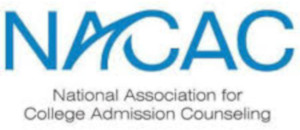My recent column about the randomness of admissions decisions garnered more than the usual number of “attaboys” and “tell-me-mores.” One of my old running buddies shared 40 years of frustration regarding alumni interviews. One of my colleagues described an exemplary student with some disappointment results. Another colleague shared a brilliant analogy that may help with the frustration of doing everything right and not achieving the hoped for results.
Read the three examples. See if you can come up with an explanation that encompasses all the data.
1) I take these conversations seriously, my alumni interviewer friend began. I listen actively to the seniors as they describe the activities in which they’ve been involved. The kids are extraordinary. Leadership, academic accomplishment, follow through. I can’t get over it. One 18-year-old had implemented an after-school reading program for third graders who were a year behind grade level. She involved 14 of her classmates who volunteered ever day after school for a full eight months. The underserved students went from a year behind to a year ahead. Astonishing and wonderful.
My undergraduate experience was phenomenal. I loved my college,* attribute much of subsequent success to the teachers and the connections. I would be pleased to unite these amazing students with that experience. I write shimmering recommendations. But nine of ten of the students whom I interview and recommend are turned down. It’s disappointment. I don’t feel like admissions counselors at my alma mater are listening to me.
2) My wonderful colleague, Stacey Cunitz offers the following: Imagine a high-end chocolate shop. There are case after case of exquisite chocolates. Some are milk chocolate, some are dark. There are caramels and cordials, chocolates with mint, and chocolates with peanut butter. You are going to buy a box of 12. There are over a hundred possibilities from which to choose. You are bringing the assortment to a party where you don’t know everyone or their taste. You start by choosing the dark chocolate caramel sea salt. (Yum!) Then you add a milk chocolate marshmallow. (Awesome!) You don’t have a fruit yet, so you choose a cherry cordial. You assemble your box of 12.
Is it the best possible box of 12? Of course not! Could you have picked an equally diverse and delicious assortment that had 12 totally different chocolates in it? Yes! And no matter what combination you choose, a lot of delicious chocolates are going to be left in the case.
3) My collaborator and good friend, Jeff Levy, describes the following student and her results.
- Young woman of South Asian descent
- Full pay
- 4.0 unweighted grade point average in a highly rigorous course of study
- 1580 SAT
- Six AP tests – five 5s, one 4
- Selected to participate in competitive NASA summer high school research program, and her research team competitively selected to be funded for further NASA research
- Extensive community service with significant impact, both regionally and internationally
- Curious, brilliant, kind, humble, introspective, generous, and deeply connected to her cultural traditions–values expressed lyrically in her essays
Denials:
- USC
- University of Washington – Seattle
- UCLA
- UC Berkeley
Now the absurd questions and second guessing from those who believe there’s a cogent explanation, a “why” that explains: Would a 1590 rather than a 1580 have changed her decision at UCLA? Had she been graduated first in her class of 850 seniors rather than third would the University of Washington-Seattle have admitted her? Would she have been accepted at the University of Southern California if her parents were born in Cambodia rather than Indonesia?
No, no, and of course not.
But next time someone tells you that under-represented minorities have an advantage or that full pay kids are more likely to be accepted (do you see how these two groups are all but mutually exclusive?) you can mention data points like this one.
Again, there is no why. There is the opportunity to internalize that a strong student will do well wherever she matriculates. There is the realization that highly competitive schools have more valedictorians applying that they have first year spots. There is the chance
And there is the opportunity to use Stacey’s brilliant analogy, and acknowledge that this student—her denials at these top colleges notwithstanding—is still delicious.
* Duke, Emory, Washington University—a school at that level of competitive admissions. Every detail of the above vignettes is truthful though not factual, to preserve confidentiality.







3 thoughts on “No Why-ning”
Nothing worked me over more than this process. It was terrible. It was years ago, but sometimes it still bothers me. Thanks for the great column.
I want to Smith. I want all of these students there. If they are still looking, I would try to sponsor them.
David, “No Why-ning” is a brilliant title—drew me right in! And the article did not disappoint. I have a feeling lots of people could benefit from it besides those who are dealing with the college admissions process. You need to get back on Twitter and build your following there!